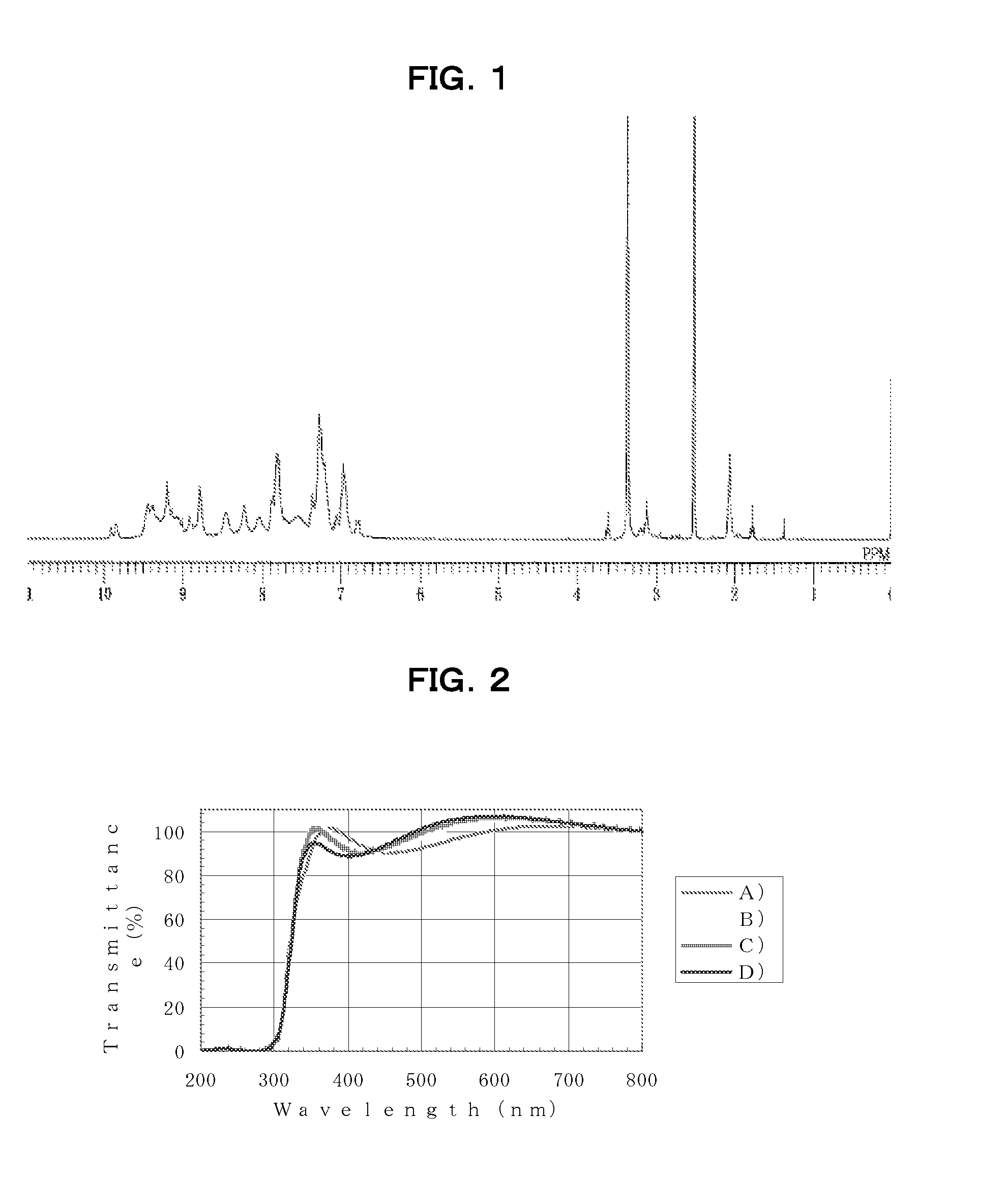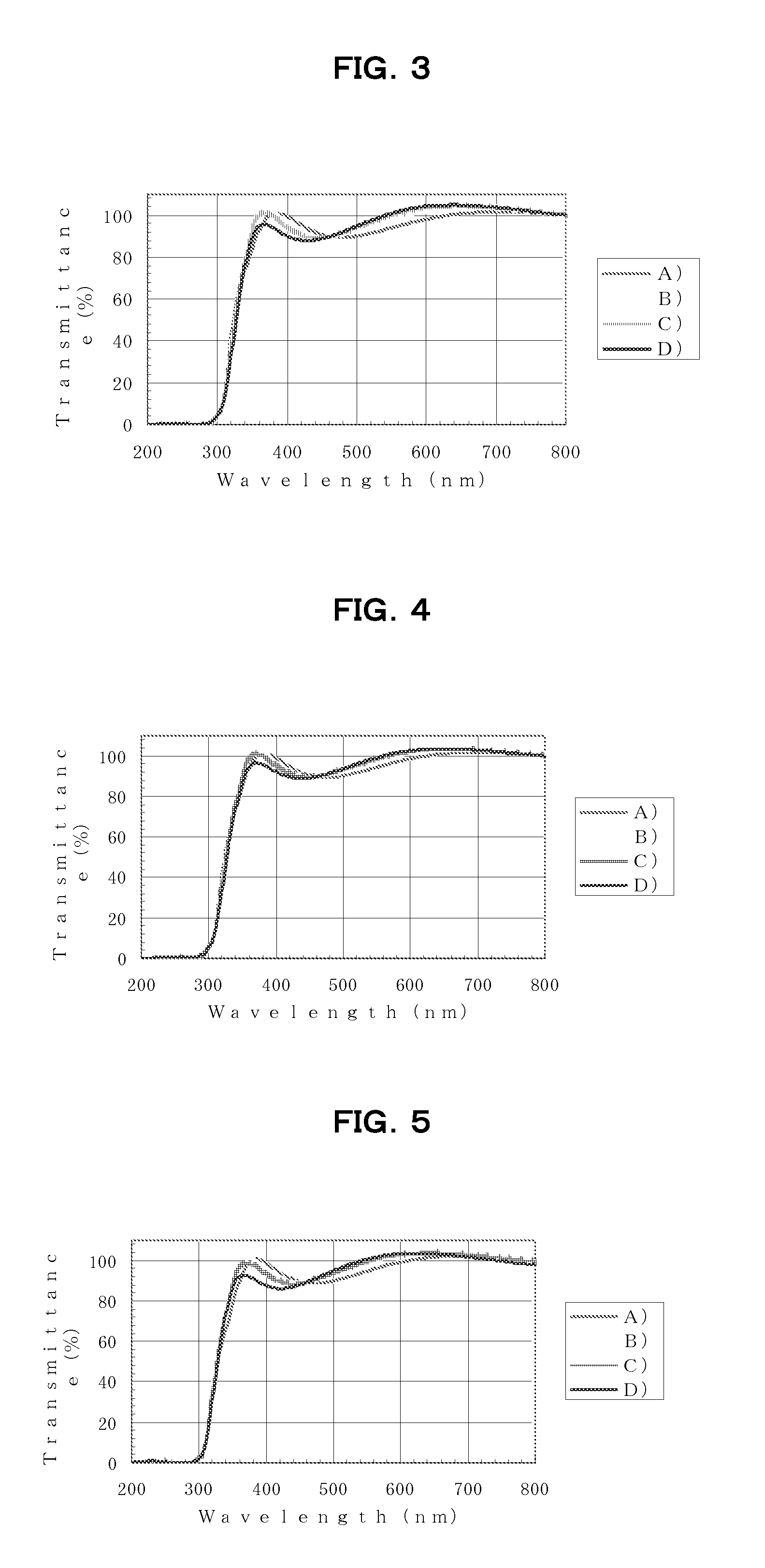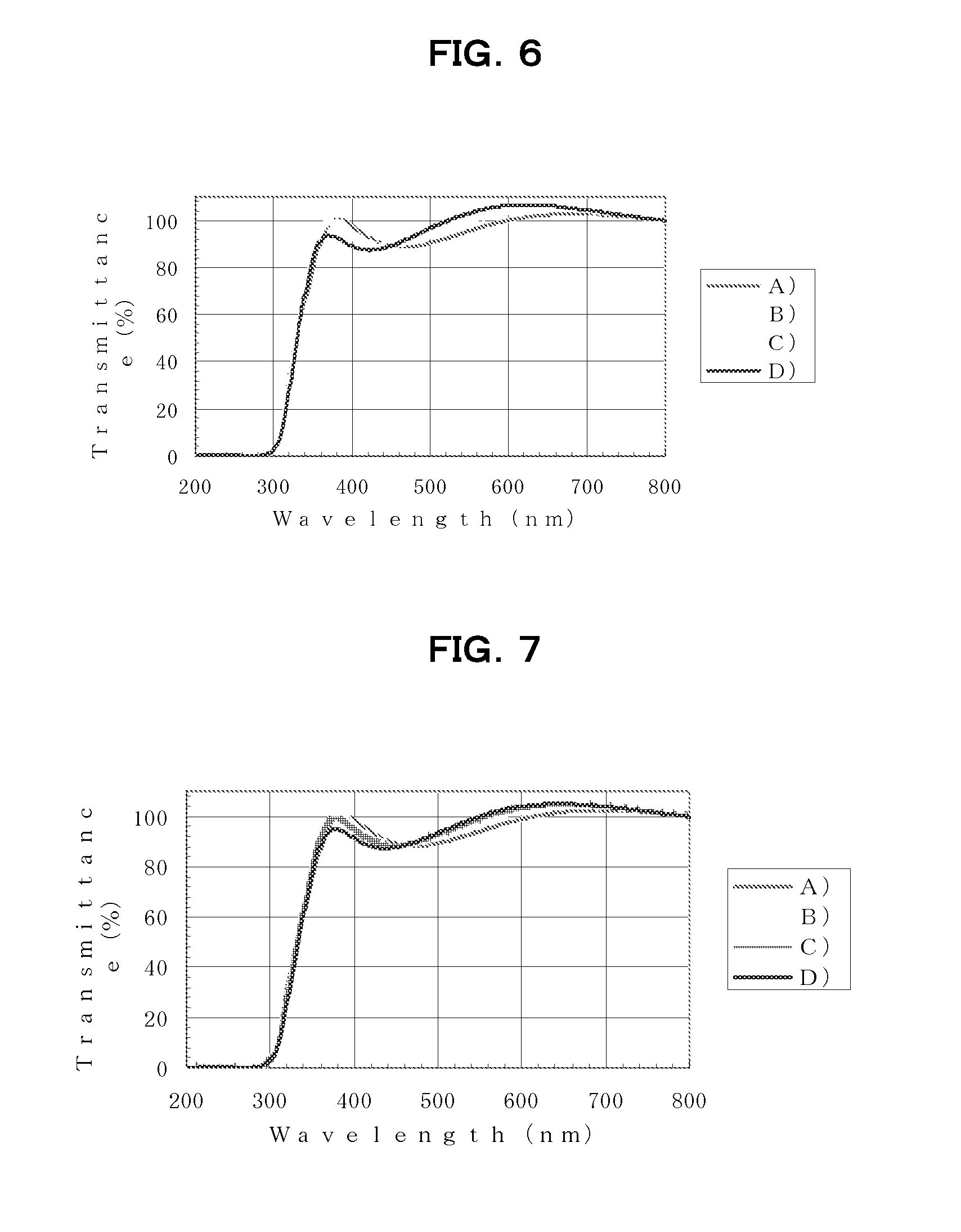Film-forming composition
a technology of composition and film, applied in the field of film-forming composition, can solve the problems of high solubility of materials, unsuitable for baking in open air at 300° c, and generally low transparency of materials of this type, and achieve the effects of high transparency, high heat resistance, and high refractive index
- Summary
- Abstract
- Description
- Claims
- Application Information
AI Technical Summary
Benefits of technology
Problems solved by technology
Method used
Image
Examples
synthesis example 1
[0273]Synthesis of Triazine Ring-Containing Hyperbranched
[0274]Polymer [3]
[0275]
[0276]Under an air atmosphere, 28.94 g of m-phenylenediamine [2] (0.27 mol, Aldrich) was added to a 1,000 mL four-neck flask, dissolved in 121 mL of N,N-dimethylacetamide (DMAc), and heated to 100° C. on an oil bath. Next, 36.91 g of 2,4,6-trichloro-1,3,5-triazine [1] (0.20 mol; Tokyo Chemical Industry) dissolved in 261.5 mL of DMAc was added and polymerization was started.
[0277]After 50 minutes, 56.53 g of aniline (0.6 mol; Junsei Chemical Co., Ltd.) was added and the flask contents were stirred for 1 hour, stopping polymerization. The reaction mixture was allowed to cool to room temperature, then was reprecipitated in a mixed solution of 28% ammonia water (30.4 g) dissolved in 1,600 mL of water and 520 mL of methanol. The precipitate was collected by filtration, re-dissolved in 400 mL of THF and 15 mL of N,N-dimethylformamide, then reprecipitated in 2,100 mL of ion-exchanged water. The resulting precip...
example 1
[0283]A 20% CNH solution of HB-TmDA45 was prepared by weighing out 2.0000 g of the HB-TmDA45 obtained in Synthesis Example 1 into a 20 mL pear-shaped flask, then adding 10.0000 g of CHN and effecting complete dissolution at room temperature.
[0284]A varnish (abbreviated below as “HB1-100”) having a total solids content of 8.0 wt % was obtained by weighing out 2.0000 g of the 20% CHN solution of HB-TmDA45 prepared above into a 20 mL pear-shaped flask, adding 3.8095 g of Titania Dispersion (1) (the solids content of the inorganic fine particles, relative to the solids content of the HB-TmDA45, being 100 parts by weight), adding 0.0400 g of a solution obtained by diluting BYK-307 (BYK-Chemie Japan KK) as the surfactant with 1-methoxy-2-propanol (PGME) to a concentration by weight of 0.1%, then adding 4.1555 g of PGME and mixing to complete uniformity at room temperature.
[0285]Using a spin coater, the resulting HB1-100 varnish was spin-coated onto silicon substrates or quartz substrates ...
example 2
[0286]A varnish (abbreviated below as “HB1-200”) having a total solids content of 8.0 wt % was obtained by weighing out 1.5000 g of a 20% CHN solution of HB-TmDA45 prepared in the same way as in Example 1 into a 20 mL pear-shaped flask, adding 5.7143 g of Titania Dispersion (1) (the solids content of the inorganic fine particles, relative to the solids content of the HB-TmDA45, being 200 parts by weight), adding 0.0300 g of a solution obtained by diluting BYK-307 (BYK-Chemie Japan KK) as the surfactant with PGME to a concentration by weight of 0.1%, then adding 4.0095 g of PGME and mixing to complete uniformity at room temperature.
[0287]Aside from using the HB1-200 varnish thus obtained, the varnish was spin-coated onto silicon substrates or quartz substrates in the same way as in Example 1, following which baking was carried out under the same respective conditions A), B), C) and D) as in Example 1, thereby forming films.
PUM
| Property | Measurement | Unit |
|---|---|---|
| weight-average molecular weight | aaaaa | aaaaa |
| weight-average molecular weight | aaaaa | aaaaa |
| weight-average molecular weight | aaaaa | aaaaa |
Abstract
Description
Claims
Application Information
 Login to View More
Login to View More - R&D
- Intellectual Property
- Life Sciences
- Materials
- Tech Scout
- Unparalleled Data Quality
- Higher Quality Content
- 60% Fewer Hallucinations
Browse by: Latest US Patents, China's latest patents, Technical Efficacy Thesaurus, Application Domain, Technology Topic, Popular Technical Reports.
© 2025 PatSnap. All rights reserved.Legal|Privacy policy|Modern Slavery Act Transparency Statement|Sitemap|About US| Contact US: help@patsnap.com



